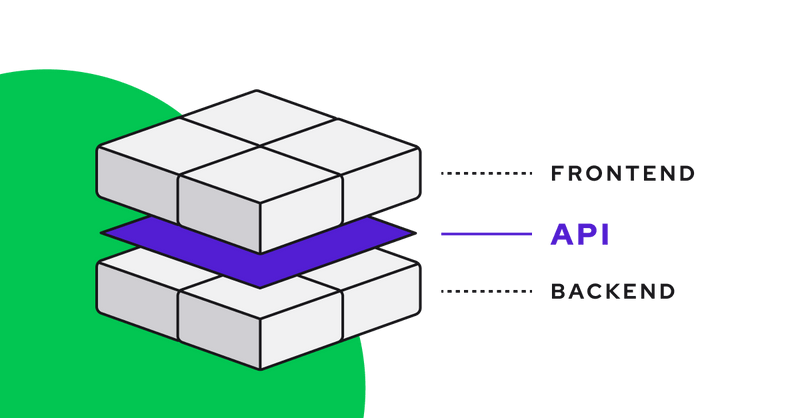A Practical Guide for Companies Navigating Declining Traffic
A drop in organic traffic can feel unsettling — especially if your team relies on steady inbound demand to drive sales. But declining traffic doesn’t...
Published: Dec 15, 2023 Updated: Jul 3, 2025
Building the ideal eCommerce tech stack is crucial for any online business aiming to thrive in today’s digital marketplace. This comprehensive how-to aims to walk you through various layers of an eCommerce technology stack, ensuring that your online presence is functional and ahead of the curve in terms of efficiency, scalability, and customer satisfaction.
The eCommerce tech stack, a combination of software tools and technologies that create a seamless shopping experience, is at the heart of any successful online store. Whether you’re just getting started or looking to upgrade your current system, understanding the components of an eCommerce technology stack is critical to making informed decisions.
The foundation of a robust eCommerce tech stack begins with a powerful and versatile eCommerce platform. This platform is the bedrock upon which you’d integrate all other technologies. It should be flexible enough to accommodate your specific business needs, scalable to grow with your business and secure to protect both your data and your customer’s information.

In addition, we delve into customer relationship management (CRM) systems, vital in managing customer data and interactions. A good CRM integrated into your eCommerce tech stack helps personalize customer experiences, boosting loyalty and sales.
Another crucial component is an efficient payment gateway. This element of your eCommerce technology stack is responsible for processing customer payments securely and efficiently. Choosing the right payment gateway has the power to significantly impact your conversion rates and customer trust.
We also explore the importance of analytics and reporting tools. These tools help you understand your customers’ behavior, track key performance indicators (KPIs), and make data-driven decisions to optimize your eCommerce store.
Additionally, we touch upon the importance of marketing automation tools and how they seamlessly integrate into your eCommerce tech stack. These tools automate various marketing tasks, help reach a wider audience, and create more personalized marketing campaigns.

Lastly, we discuss the future trends in eCommerce technology stacks, such as the integration of AI and machine learning, which operate to revolutionize the way online businesses operate.
Hopefully, you will clearly understand the components of an ideal eCommerce tech stack and how to strategically choose the right technologies to build a successful, future-proof online business. Whether you are a startup or an established player, this blog is an invaluable resource in your journey toward eCommerce excellence.
Getting started with building an ideal eCommerce technology stack can be daunting, especially given the vast number of options available in the market today. However, with a strategic approach and a thorough understanding of your brand’s needs, you can effectively assemble a tech stack for eCommerce that meets your current requirements and scales for future growth.
Firstly, it’s essential to understand what constitutes a tech stack for an eCommerce website. An eCommerce technology stack is a broad collection of software tools and platforms that work together to create, manage, and ultimately optimize your online store. This collection includes everything from your website’s infrastructure and payment processing systems to customer relationship management (CRM) and data analytics tools.

The foundation of any tech stack for eCommerce is the eCommerce platform itself. This platform acts as the backbone of your online store, enabling you to manage products, process orders, and provide customer service. When selecting a venue, consider factors like scalability, security, and, finally, the level of customization it offers.
Next, consider the payment processing system. This system should seamlessly integrate with your eCommerce platform and support various payment methods to cater to a wider audience. Security and reliability are key here, as this will handle sensitive financial transactions.
As we often cover, a modern PIM solution is crucial to keeping product data in order for the rest of your tech stack to be optimized. But what does the rest of the tech stack look like?
For customer data management and marketing, integrating a robust CRM system into your tech stack for an eCommerce website is vital. This integration will help you track customer interactions, manage leads, and tailor marketing efforts based on customer behavior and preferences.
Analytics and reporting tools are also crucial components of your eCommerce technology stack. These tools will help you understand customer behavior, track performance metrics, and come to informed decisions to optimize your store.
Finally, consider the scalability and integration capabilities of each component of your tech stack for eCommerce. As your business grows, your tech stack should be able to adapt and integrate new tools or platforms without significant disruptions.

Building the ideal tech stack for an eCommerce website requires careful consideration of your brand’s needs, scalability, security, and the ability to integrate various components seamlessly. By choosing the right combination of tools and technologies, you can create a robust and efficient eCommerce technology stack that drives growth and ensures a great customer experience.
A full-stack eCommerce solution represents the complete integration of all necessary technologies and tools to create a seamless online shopping experience. This approach involves building and managing an eCommerce technology stack encompassing everything from the front-end user experience to the back-end database and server infrastructure. The goal is to provide a comprehensive system that addresses every aspect of online retail operations.
The foundation of a full-stack eCommerce website is its eCommerce technology stack. It is the layered structure of technologies that work together to form a complete eCommerce solution. It includes various components such as web development frameworks, server technologies, database management systems, and front-end development tools. Each layer of the stack eCommerce environment plays a highly-important role in the overall performance and functionality of the website.

At the front end, the stack eCommerce solution focuses on user experience and interface. The focus includes the design and development of the website using HTML, as well as CSS and JavaScript. Also, it might involve frameworks like React or Angular for dynamic and responsive design. The front end must be intuitive, visually appealing, and easily navigable to ensure a positive user experience.
The back end of a full-stack eCommerce website deals with server-side programming, database management, and application logic. Businesses use technologies such as Node.js, PHP, Python, or Ruby on Rails for server-side development. The choice of database – whether it’s MySQL, MongoDB, or another option – is also crucial, as it stores all the vital data like product information, customer details, and transaction records.
Another critical aspect of a full-stack eCommerce solution is integrating third-party services and APIs for various functionalities like payment gateways, shipping, and inventory management. These integrations are essential for automating and streamlining operations.

Security is a paramount concern in the stack eCommerce framework, involving measures like SSL certification, data encryption, and secure payment processing to protect the business and its customers.
A full-stack eCommerce solution encompasses a comprehensive eCommerce technology stack that ensures the smooth functioning of all aspects of an online store. From front-end development to back-end server management, each layer of the stack eCommerce setup contributes to creating a robust, secure, and user-friendly online shopping platform.
The technology stack for eCommerce is a critical aspect for any business venturing into the online retail space. Whether it’s for a sprawling enterprise or a budding tech stack for an eCommerce startup, choosing the right combination of technologies can dictate the efficiency, scalability, and, ultimately, the online venture’s success. This stack is a set of tools and a strategic foundation that supports and drives the business.
Reiterating the basics, a tech stack for an eCommerce website typically comprises both front-end and back-end technologies. The front end is what your customers interact with. It includes all facets from the website design and layout to the user interface (UI) and user experience (UX) aspects.

Technologies like HTML, CSS, JavaScript, and frameworks like React or Angular are popular. They make sure that the website is visually engaging but also intuitive and responsive.
The back end of the eCommerce tech stack is where the website’s core functionality resides. Additionally, the back end includes server-side programming, database management, application logic, and server management. Languages and frameworks like Python, Node.js, Ruby on Rails, and PHP are common. The choice of the database, like MySQL, PostgreSQL, or MongoDB, also forms a crucial part of this layer, handling all the data transactions of the eCommerce platform.
It’s crucial for a tech stack for an eCommerce startup to incorporate scalability and flexibility in the choice of technologies. Startups must adapt quickly to changing market demands and customer preferences, so selecting technologies that can scale and evolve with the business is crucial.
As mentioned earlier, integration capabilities are another critical factor. An eCommerce website must integrate with third-party services such as payment gateways, shipping and logistics services, and customer relationship management (CRM) systems. The tech stack should support seamless integration with these services for efficient operations.
Again, security is paramount in eCommerce. Technologies that ensure secure transactions, data protection, and compliance with legal standards like PCI DSS for payment processing are essential components of the tech stack.
The tech stack for eCommerce, particularly for a startup, should be chosen with a focus on scalability, flexibility, integration capabilities, and security. The right combo of front-end and back-end technologies can create a robust, user-friendly, and secure platform that meets current business needs and supports future growth and success.
Choosing the best tech stack for eCommerce is crucial for building a robust and efficient eCommerce website. The right tech stack for eCommerce websites ensures smooth operations and enhances user experience, scalability, and security.
The front end of the tech stack for eCommerce is where customer interaction happens. Here, HTML, CSS, and JavaScript are foundational. Modern JavaScript frameworks like React or Vue.js are famous for their responsiveness and dynamic content capabilities. These technologies ensure the website is user-friendly, visually appealing, and adaptive to different devices and screen sizes.
For the back end, which is central for any tech stack for an eCommerce website, choices vary based on requirements. Commonly used programming languages include Python and JavaScript (Node.js), known for their scalability and community support. Frameworks like Django (Python) or Express (Node.js) can streamline development. The database, a critical component, often involves SQL or NoSQL databases, depending on the data structure and scalability needs.
Integrating a reliable, secure payment gateway is another essential aspect. Brands highly favor options like Stripe or PayPal for their security features and ease of integration.
Furthermore, for a tech stack for eCommerce, incorporating an optimized Content Management System (CMS) such as WordPress or Magento can be beneficial for managing content and inventory effectively.
Cloud services like AWS or Google Cloud can provide scalability and flexibility, essential for handling varying traffic loads and data storage needs.
In summary, the best tech stack for eCommerce involves a combination of front-end technologies for user interface, back-end technologies for core functionality, secure payment integrations, effective CMS, and scalable cloud services. This blend ensures a robust, scalable, and user-friendly eCommerce website.
The Essential Components of a Multi-Channel eCommerce Tech Stack
If you’d like to take a deeper dive into developing your eCommerce tech stack, our whitepaper on the topic.
You’ll gain a comprehensive view of:
Download: Whitepaper


